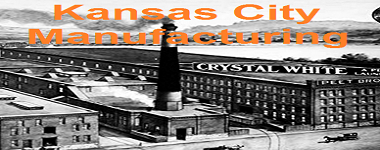
Of the four regional manufacturing surveys released for August, all were in expansion.

Analyst Opinion of Kansas City Fed Manufacturing
Kansas City Fed manufacturing has been one of the more stable districts and their index improved. Key internals were in expansion. Note that last month the hard data showed contraction whilst all of the Fed district surveys showed expansion.
There were no market expectations from Bloomberg / Econoday. The reported value was 16. Any value below zero is contraction.
z kansas_man.PNG
The Federal Reserve Bank of Kansas City released the August Manufacturing Survey today. According to Chad Wilkerson, vice president and economist at the Federal Reserve Bank of Kansas City, the survey revealed that Tenth District manufacturing activity expanded at a faster pace and expectations remained solid.
“Factories reported acceleration in activity in August to the fastest pace since March,” said Wilkerson. “Many firms also reported plans to raise finished goods prices in coming months.”
TENTH DISTRICT MANUFACTURING SUMMARY
Tenth District manufacturing activity expanded at a faster pace in August, and expectations for future activity also remained solid. Price indexes rose across the board, especially the expectations index for finished goods prices.
The month-over-month composite index was 16 in July, up from 10 in July and 11 in June (Tables 1 & 2, Chart). The composite index is an average of the production, new orders, employment, supplier delivery time, and raw materials inventory indexes. Factory activity increased solidly at durable goods plants, particularly for electronics, metals, and aircraft products, while nondurable goods activity rose more modestly. Most month-over-month indexes increased over the previous month. The production index jumped from 4 to 22, and shipments, new orders, and order backlog indexes rebounded strongly after falling last month. The employment index has remained basically unchanged for the past three months, while the new orders for exports index edged higher. The finished goods inventory index fell from 7 to 2, while the raw materials inventory index was unchanged.
The year-over-year factory indexes were mixed in August. The composite index was unchanged at 23, while the production, shipments, new orders, and order backlog indexes eased slightly but remained well above zero. However, the employment index was stable at 22, and the capital expenditures index rose from 15 to 21. The raw materials inventory index increased from 10 to 18, while the finished goods inventory index was basically unchanged.

















